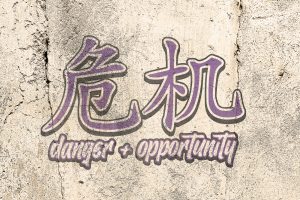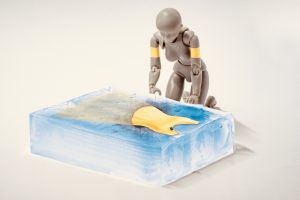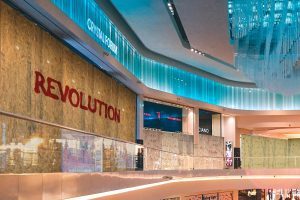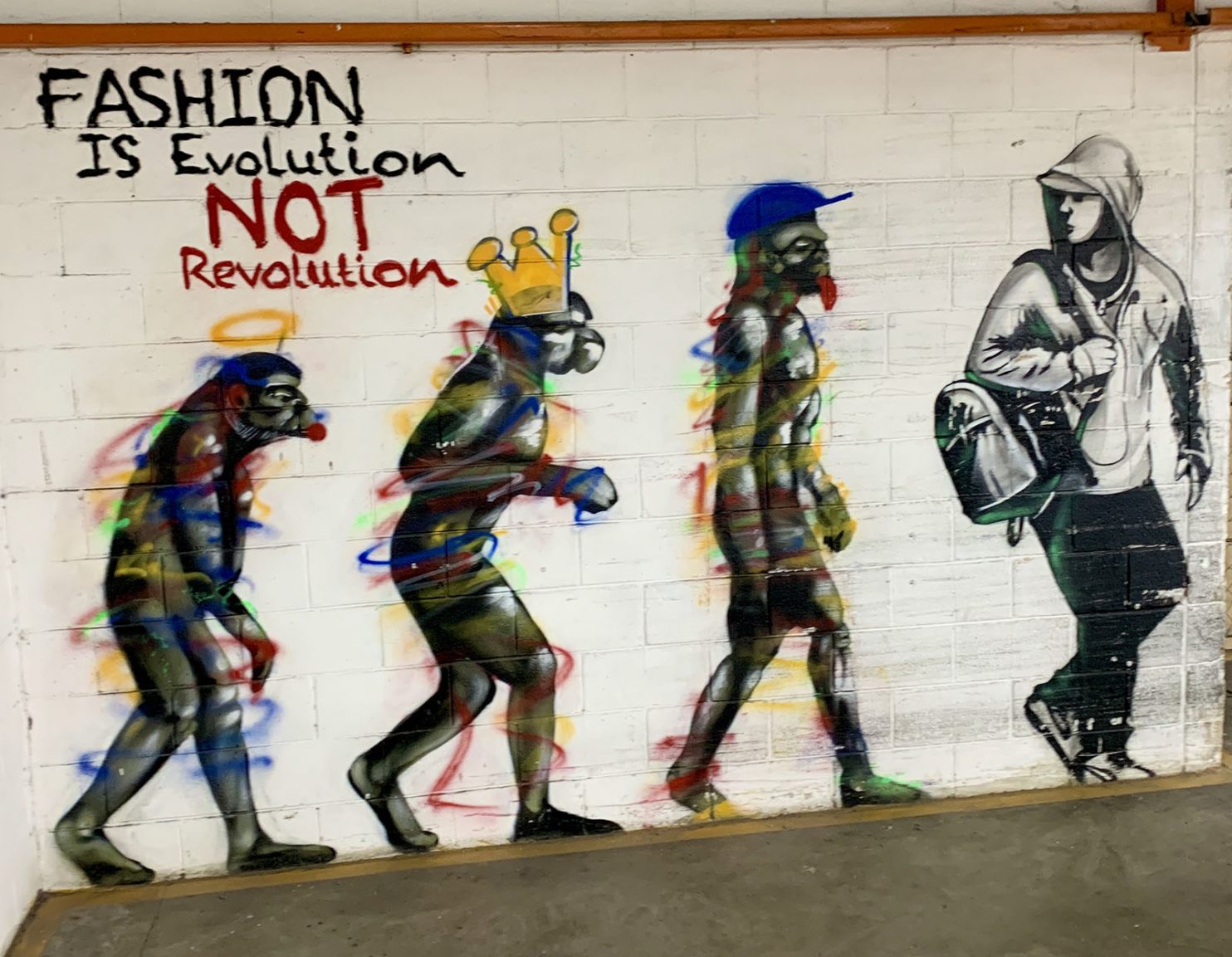Throughout my career in the apparel industry, I have been designing and developing fashion lines for clients. Guiding my advice on direction and decisions has been a straightforward phrase: fashion is evolution, not revolution. Today, this phrase rings more accurate than ever, crystalizing the core foundations of success for the fashion industry in our push to a post-COVID world.
Lectures, white papers, and webinars from fashion industry sages have presented numerous views on the imminent changes in the apparel and retail landscape. Some businesses have embraced the transition following the path of evolution. In contrast, others have ignored the advice, betting on the belief that there are more years to profit from the “outdated retail model.”
COVID-19 – The Ice Age of Our Time
 We have all walked through stores and experienced the ever-expanding flea market of many ideas, seasons, fits, and aesthetic levels, all crammed into tighter and tighter square footage to justify the internal plans for projected income goals. Likewise, we have all witnessed the race to strip the product of quality, while some aesthetic is maintained to drive profitability amid a discount intensive consumer model.
We have all walked through stores and experienced the ever-expanding flea market of many ideas, seasons, fits, and aesthetic levels, all crammed into tighter and tighter square footage to justify the internal plans for projected income goals. Likewise, we have all witnessed the race to strip the product of quality, while some aesthetic is maintained to drive profitability amid a discount intensive consumer model.
A variety of bad decisions and overbuys have led to stockpiles of excess. Unsold inventories are now stuffing landfills, yet buyers continue to bring in new apparel to satisfy the audience’s demand for faster fashion despite the growing movement for sustainability.
Much as the Ice Age catalyzed the demise of the dinosaur, the COVID Age has accelerated the end or restructure of many of our industry’s dinosaurs. The list of endangered brands and stores grows every day, and those of us in the fashion industry are not surprised. On the contrary, many are more surprised that those immersed in the aging model are still around. To this point, the survival of the giants has been in large part due to the amount of real estate they own or other non-industry related buoys.
Surviving the Storm
 The Chinese character for crisis is comprised of two elements: Danger + Opportunity, recognizing that in each moment of hardship, there is potential for positive change. How companies choose to embrace change will directly relate to who survives the storm and thrives.
The Chinese character for crisis is comprised of two elements: Danger + Opportunity, recognizing that in each moment of hardship, there is potential for positive change. How companies choose to embrace change will directly relate to who survives the storm and thrives.
It is indeed survival of the fittest, and success will come to those most nimble and directional. Over the last few years, demand for product has been on the rise globally, but consumer behaviors have been changing. COVID’s recent influence has made this shift more acute and evident in the short term. I project that pent-up demand will reinvigorate the industry. Because many companies have canceled massive amounts of product, at the onset of the pandemic, there is a strong chance demand will exceed supply. This presents an opportunity for brands that have evolved their model and are aware of the needs of their client base.
A Brand that Breaks the Ice
 With the decline or death of many of the larger, more traditional dinosaurs in the fashion industry, there will be increased opportunities for companies that embrace the new retail paradigm.
With the decline or death of many of the larger, more traditional dinosaurs in the fashion industry, there will be increased opportunities for companies that embrace the new retail paradigm.
What does this new retail model look like? Informed by my 30 years of experience in the fashion industry, there are a few key areas to consider.
Brand Story:
|
Production:
|
Product:
|
Accessibility:
|
Revolutionary Risks
 Revolution, in many cases, is a symptom of not embracing evolution. History has demonstrated significant losses throughout the ages due to revolution. It is painful, costly and many fail to survive.
Revolution, in many cases, is a symptom of not embracing evolution. History has demonstrated significant losses throughout the ages due to revolution. It is painful, costly and many fail to survive.
As in war, this truth applies to the fashion industry. A company taking a revolutionary approach seeks to make radical changes. Urgent recalibration comes at great risk, for instance, when new CEO Ron Johnson took over at JC Penney and moved to remake the behemoth in the image of Apple. Extreme missteps cost the 118-year-old company dearly and paved the way for Chapter 11 that they filed in May 2020.
Evolutionary Decisions
 Evolution in nature is healthy, representing positive change because of greater forces. Regarding the apparel industry, we have been in this mode of mass consumerism, decreased quality, and over abundant non-moving inventory. This has caused considerable waste that is taxing landfills, the demise of industry monoliths resulting in job loss, and general confusion to the consumer. It is time to present a new, refined customer experience.
Evolution in nature is healthy, representing positive change because of greater forces. Regarding the apparel industry, we have been in this mode of mass consumerism, decreased quality, and over abundant non-moving inventory. This has caused considerable waste that is taxing landfills, the demise of industry monoliths resulting in job loss, and general confusion to the consumer. It is time to present a new, refined customer experience.
In preparation for imminent change, the fashion industry must subtly embrace those shifts by making necessary, calculated moves at the beginning of the cycle and evolving the strategy in a comfortable, conducive manner. This approach not only eases the consumer’s transition but also prevents costly (and potentially fate sealing) mistakes.
To set yourself up for success while embracing change, here are some steps to consider:
|
Helping Clients and Companies Move to the Future
 While It is a disconcerting time, we can choose to stay in place and be “covered in ice” or evolve our thought processes, retail strategies, development and production cycles and thrive. Without a doubt, the fashion industry is perfectly poised to re-invent itself. How businesses choose to respond is the opportunity at hand.
While It is a disconcerting time, we can choose to stay in place and be “covered in ice” or evolve our thought processes, retail strategies, development and production cycles and thrive. Without a doubt, the fashion industry is perfectly poised to re-invent itself. How businesses choose to respond is the opportunity at hand.
As the CEO and President of the Stars Design Group, I have prioritized our commitment to being at the forefront of technology to support ongoing advancement. Several years ago, we decided to embrace 3D design, refining it to an art that has supported improved efficiency and has helped our clients make necessary decisions at any stage of development or production. Being evolutionary, we were well-positioned to be virtually connected with our clients worldwide long before the days of COVID demanded.
Now, with new challenges at hand, I remain encouraged about all the possibilities in store for the industry and Stars Design Group. If you are feeling lost navigating the evolving landscape in the fashion industry, let me know. The Stars Design Group team is here to help. You can reach me at [email protected].
 Bret Schnitker, CEO and President of Stars Design Group is a fashion industry executive with nearly 30 years working in all facets of the sector. During his tenure at a $3b retail organization, Bret managed greater than $1b in retail as Director of Design and Development, which cultivated his design aesthetic and aptitude for trend forecasting. In his role with Stars Design Group, he brings vast technical expertise in all categories of the apparel industry, fulfilling design and manufacturing for major brands and retail on a global footprint.
Bret Schnitker, CEO and President of Stars Design Group is a fashion industry executive with nearly 30 years working in all facets of the sector. During his tenure at a $3b retail organization, Bret managed greater than $1b in retail as Director of Design and Development, which cultivated his design aesthetic and aptitude for trend forecasting. In his role with Stars Design Group, he brings vast technical expertise in all categories of the apparel industry, fulfilling design and manufacturing for major brands and retail on a global footprint.

